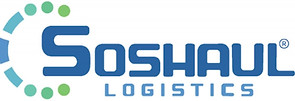What Is a CSA Score? How Is It Calculated?
- Eric Carter, Dr. Sean Goffnett, Samantha Allen
- Mar 2, 2023
- 4 min read
Updated: Oct 4, 2023
The Compliance, Safety, and Accountability (CSA) is a compliance and enforcement program that follows the standards set by the FMCSA to improve safety on the road. Every CDL driver operating under a USDOT number is given a CSA score consisting of roadside inspection data.

If drivers have violations in any of the 7 behavior categories below their scores can be negatively impacted.
Behavior Categories:
Unsafe Driving – moving violations and auto crimes. This could include things like speeding, reckless driving, improper lane change, and so on.
Crash Indicator – carrier is repeatedly involved in state-reported crashes.
Hours of Service Compliance – driving while out of compliance with hours-of-service requirements.
Vehicle Maintenance – issues with maintaining a vehicle like brakes, lights, or even shifting loads.
Controlled Substance or Alcohol – being in possession of or driving under the influence of illegal prescription drugs. This also includes the improper use of over-the-counter drugs.
Hazardous Materials Compliance – not having proper paperwork or securely packaging and labeling hazardous materials.
Driver Fitness – an unfit driver that does not have the proper certifications or is deemed medically incapable.
Carriers and drivers with a USDOT number can view their CSA score via the Safety Measurement System. The FMCSA updates this system once a month with data on inspection violations, crashes (no matter who’s at fault), and even the number of miles run by the driver. Some of the behavior categories will score higher than others and a CSA score chart can be used to understand the details of basic violations. Carriers should monitor their scores because the CSA decides which corrective actions should be taken against the carrier based on scores. Scores can also impact if a shipper will work with the carrier, or if an employer will hire a driver.
The FMCSA will send warnings to carriers when their data indicates the carrier is not complying with safety regulations. The warnings will indicate which BASIC has a higher safety and compliance score, or more violations than similar carriers. Violation data is compiled into each category and the carrier receives a score that is a comparison to carriers with similar numbers of inspections and violations. Each BASIC category has an intervention threshold, which was established because they are strong indicators of future crash risk. If a carrier’s scores exceed this threshold within a given month, then the carrier is placed on the FMCSA’s priority list to receive an audit.

Source: SMS Methodology Book
Understanding CSA Points and Score Chart
The criteria that are used to determine points include the severity of any crash, safety violations in the past 2 years, and annual miles driven. There are around 670 violations across the 7 behavior categories and there are 12 red-flag violations that are much more severe than others. For example, a driver operating a CMV past hours of service will be penalized 7 points. A driver in possession of a controlled substance, a more severe violation, will have 10 points added to their score. Other factors impacting a CSA score and penalty severity include if there are any passengers, what materials were being transported, and how many power units were involved.

The goal for carriers and drivers should be to have the lowest CSA score possible. Commercial drivers can keep CSA scores low by passing roadside inspections. Properly conducting pre-trip inspections will also help keep CSA scores low. Pre-trip inspections are a thorough check of the vehicle, inside and out, prior to departure and every 24 hours after. Roadside inspections can be conducted at weight stations, which are also used to make sure trucks are not traveling on roads that are not built for them. At the weigh station, an inspector will walk around the vehicle to check certain parts and make note of any violations.
The following CSA score chart goes over some common violations, but there are more details on the program and points tables in the SMS Methodology Book.
Improving CSA Scores
Carriers should work to maintain the lowest CSA scores possible to avoid a potential DOT audit. The lower the score, the better; but what are some ways to improve a high score? Give the following Soshaul Pro-Tips a shot.
Print off, or electronically store records from the pre-trip inspection report.
Every chance you stop the vehicle perform another spot check, so you have the confidence it is running smoothly.
Pay special attention to tires, brakes, and broken lights.
Use Electronic Logging Devices to eliminate the chance of log violations.
Utilize a pre-trip, en-route, and post-trip inspection reporting checklist. Check out our Definitive "All-in-One" Vehicle Inspection Report Checklist Bundle!
Low CSA scores can be a huge benefit for carriers, but if something goes wrong it is important to take action to improve. Contesting a ticket is a difficult task for OTR drivers and the best way to increase chances of getting the ticket dismissed or penalties removed is to use a CSA score chart to clearly understand the requirements of the violations. If a carrier gets a violation, they should obtain a copy to compare with the CSA score chart so they are able to discuss the matter with a legal representative.
There are two major choices when it comes to starting your professional driving career – starting your own trucking business or working as a company driver. There are multiple ways to start your trucking business with different levels of investment, risk, pay, and support. It should be clear by now that it takes a definitive plan. If you feel drawn to the idea of starting your own trucking business, and if you feel you have the inner drive to drive, Soshaul can help! Please check out our free and for-purchase resources, templates, and in-depth courses available on our website.
Are you interested in learning more about topics such operating authorities or regulations, business plans or business structures, equipment or technology, or perhaps sales and marketing in transportation? Ready to START, DRIVE, & ACCELERATE your trucking business? Check out our course here!

Interested in being notified when more free resources are available? Subscribe down below and you'll be the first to know!
Soshaul Logistics LLC and its affiliates do not provide tax, legal or accounting advice. This material has been prepared for informational purposes only, and is not intended to provide, and should not be relied on for, tax, legal or accounting advice. It is meant to serve as a guide and information only and Soshaul Logistics, LLC - Copyright 2023 - does not assume responsibility for any omissions, errors, or ambiguity contained herein. You should consult your own tax, legal and accounting advisors before engaging in any transaction or operation.




Comments